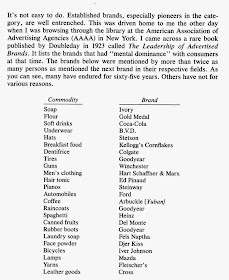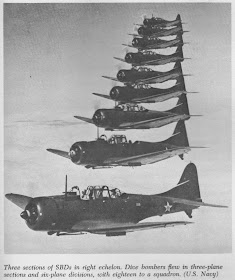Saturday, January 31, 2015
Bell & Gossett Oil-Less Air Compressor & Vacuum Pump, Guelph, Ontario
Bell & Gosset was founded in 1916 to manufacture water pumps. The company continues to operate out of Morton Grove, Illinois. It became a part of the huge ITT enterprise at some point in the past.
Oil-lubricated compressors contaminate air with oil. In 1954, Bell & Gossett engineers discovered that carbon rings on pistons could eliminate this problem. The patent number on my air compressor is the result of their work. This began the era of oil-less articulating piston compressors. In the original patent diagram below, the wearing skirt (14) is composed of U.S. Graphite No. 39. In the mid-1960's, carbon was replaced by polytetrafluoroethylene (PTFE).
Friday, January 30, 2015
Before traffic lights
Cider press
A nice old cider press I photographed in my travels. It looks like it has a chopper built into it, operated by the handwheel. Nice detailing but unfortunately no maker's name.
Thursday, January 29, 2015
The Pony Engine and the Pacific Express
These whimsical illustrations accompanied William Dean Howells short story, "The Pony Engine and the Pacific Express." This particular version of the children's story was published in Olive Beaupre Miller (Editor), Over the Hills of My Book House. (Chicago: The Book House for Children, 1920, 34th printing 1951.) The illustrator signed some of them as "Ferring" but I can't find any information about him/her.
Unusual Tools: Goldblatt Tool Company, Kansas City, Missouri
A mason's corner line block, for holding a mason's line at outside corners. Thanks to Mark Stansbury for identifying the tool for me.
Henry Goldblatt founded the H. Goldblatt Tool Company in 1885 in Kansas City, Missouri. Initially, he was a re-seller of tools to tradesmen such as cement finishers, bricklayers, plasterers, lathers, and tile setters. Beginning in the 1920's, Goldbatt began to manufacture his own plaster and cement trowels. Eventually, the company became so big that it only sold through dealers and in 1965 it built a new factory on a 9-acre site in Kansas City, but this time in Kansas. In 1992, Stanley bought the company, but as the market share for such tools eroded, Stanley divested the company in 2005. It was bought by FinishPro Tools of Lenexa, Kansas, which had already been making many Goldblatt-branded tools for Stanley. In 2006, the Goldblatt Tool Company LLC was re-established as a sole business entity.
 |
| Trowel and Masonry Tool Collector Resource |
Wednesday, January 28, 2015
Gun quad
According to The Classic Motor Cycle this is a Beeston Quad. Although appearing to be a concept that was only half thought out, it was demonstrated to the war office in 1899 for possible use in the Boer War. No evidence that it was used.
Brigantine Amazon
 |
| Stanley T. Spicer; Masters of Sail: Ryerson Press 1968 |
She was originally launched as the Amazon and had a life of misfortune, a history of collisions and apparently had three captains die while aboard. In 1885, she was intentionally run aground off Haiti in an attempt to collect the insurance.
Reese's Interlocking Adjustable Stencils
According to Reese's New Patent Adjustable Stencil Letters, official credit for the first "settable-unit stencils" goes to Edwin Allen, who filed his U.S. patent in 1840. Samuel Widdows Reese was a veteran of the American Civil War, who settled in Chicago after the conflict. His first stencil patent was filed in 1873,
and then a second patent was applied for three years later for stencils with an S-fold on one edge to lock the stencils together. In that same year, 1876, he opened his firm, S.W. Reese & Company, in Chicago. Reese left the Chicago company under the management of his partner, Christian Hanson, and established a second business, Reese & Company, in Manhattan.
 |
| Popular Gardening, 1887 |
 |
| The New Wonder Book Cyclopedia of World Knowledge. Philadelphia & Toronto: International Press, 1954. |
The Chicago company became C.H. Hanson in 1866, and remains today a family-owned concern. They still manufacture interlocking brass stencils, but no longer under the Reese name. In 2013 they acquired the Palmgren Tool Business, a famous maker of rotary tables and drill-press vices.
 |
| Popular Science, October 1948 |
 |
| Popular Mechanics, February 1951 |
Tuesday, January 27, 2015
The Machine: A Poem by Mary Elizabeth Colman
Monday, January 26, 2015
Planes in formation; Douglas Dauntless
Arnold Ferret tractor
Looks interesting and homemade but apparently was manufactured by N.P. Arnold of Pengilly, Minnesota in the early seventies.
 |
| Fbk Marketplace ad 2023 |
Songs of the Commonwealth, 1945
George Roy Fenwick (1889-1970) became Supervisor and, between 1935 and 1959, Director of Music for the Ontario Department of Education.
Imagine, a time in which music was considered so important that the provincial government actually paid someone to be director of such studies! Among his accomplishments were the school broadcasts, "Music for Young Folk" that were produced and carried by CBC between 1946 and 1964. With the use of supplementary notes, these were intended to help music teachers in their classrooms.















.jpg)
.jpg)
.jpg)
.jpg)
.jpg)
.jpg)
.jpg)




.jpg)















